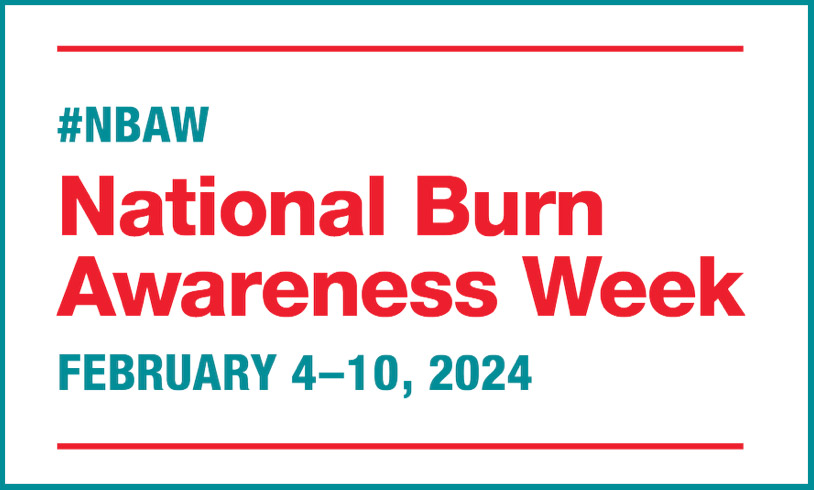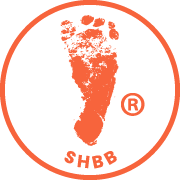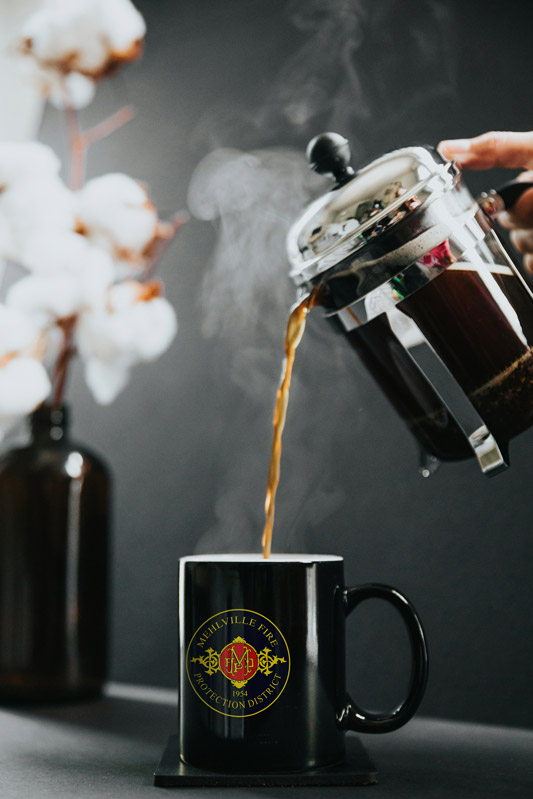Don’t Get Burned: Tips to Stay Safe for Burn Safety Week
 From February 4 through February 10, the National Fire Protection Association (NFPA) spreads awareness for National Burn Awareness Week to educate the public about burn injuries and how to stay safe. As the NFPA reports, an individual is seriously injured by a burn every minute.
From February 4 through February 10, the National Fire Protection Association (NFPA) spreads awareness for National Burn Awareness Week to educate the public about burn injuries and how to stay safe. As the NFPA reports, an individual is seriously injured by a burn every minute.
National Burn Awareness Week is sponsored by the American Burn Association each year, and fire districts across the country draw attention to the important message through public education and outreach. Fire, hot surfaces, and hot water can lead to serious burns that require treatment. In honor of Burn Awareness Week, MFPD discusses 10 common burn risk scenarios.
Table of Contents:
- Scald Injury: Why Monitoring Water Temperature Is Crucial for Burn Prevention
- Candle Fire Safety: Tiny Flames Lead to Big Burns
- Kitchen Safety Tips: Which Way Do You Point Pot Handles on a Stove?
- Crock Pot Dangers: Don’t Touch a Cooking Crock
- Hot Coffee: Contents Are…Hot!
- Should You Use Cracked Dishes? Learn the Burn Risk
- The Danger of a Wet Oven Mitt
- Fidgeting or Playing with a Cigarette Lighter or Any Lighter
- The Danger of Personal Heaters
- Remember Basic Fire Safety, and Never Get Too Close to a Flame
- How to Treat a Burn
- FAQ: Treating a Burn
Synopsis:
National Burn Awareness Week seeks to increase awareness of burn risks and how to stay safe. Minimize your risk for injury by following our safety tips.
Scald Injury: Why Monitoring Water Temperature Is Crucial for Burn Prevention
Bathwater poses several risks to infants and small children; accidental drowning can occur in only a few inches of water, but the faucet also poses a risk for scald injuries. A water heater thermostat set higher than 120 degrees Fahrenheit increases the risk of injury from scalding.
Children can accidentally turn the water faucet and drastically increase the water temperature.
This instant burst of scalding hot water can lead to burns and serious injury. St. Louis Children’s Hospital reports that burns are the second-leading cause of death for children younger than age five; Dr. Robert Kennedy, an emergency physician at the hospital, explained in an article that because a child’s skin is so much thinner than an adult’s skin, they are more susceptible to burns from hot water. For this reason, parents should check their water heater to understand the temperature setting. If the temperature is set at 140 degrees Fahrenheit (a standard setting for manufacturers), the thermostat must be adjusted downward (to around 120 degrees).
Diligence saves lives. Johns Hopkins reports, “Nearly 75% of all scalding burns in children are preventable.”
Candle Fire Safety: Tiny Flames Lead to Big Burns
Candles ignited a fragrant trend in home decor. Candles now come in various fragrances, ranging from gourmand scents that make the mouth water to clean scents reminiscent of fresh laundry. Candlelight also creates an ambient soft glow that sets a romantic or relaxing mood. Many homeowners light candles during the holiday season, and birthday cakes are not complete without candles.
Yet, these tiny flickering flames also cause devastating injuries. Careless play with candles leads to serious and a fire that spreads throughout the home. When lighting candles to set the mood, add fragrance to the home, or just for a soft glow, follow these candle fire safety tips:
 Don’t let children light candles or play with candles. These flames are not toys. Keep candles away from children and out of reach.
Don’t let children light candles or play with candles. These flames are not toys. Keep candles away from children and out of reach.- Never leave candles unattended. Candles are easy to relight. When you leave a room, blow out the flame and make sure it’s fully extinguished.
- Don’t play with hot wax. Yes, the melted wax looks cool, but that hot liquid is incredibly hot. Even adults have been burned.
- Always place candles on flat surfaces.
- After blowing out birthday candles, only parents should remove the candles from the cake. Again, children should learn not to handle candles (an extinguished candle might still have hot wax).
Kitchen Safety Tips: Which Way Do You Point Pot Handles on a Stove?
One of the most important burn prevention and kitchen safety tips is incredibly simple. Placing a pot or pan can increase the risk of burns and injuries when cooking on a stove.
NEVER place the handle of a pot or pan outward. This makes the pot or pan easy to knock over, and the handle is easier for a child to grab—improper placement results in scalding liquid or food falling onto a child or an adult.
Start a habit of facing all handles inward. This positioning makes the pot less likely to be knocked over or pulled by a child.
Crock Pot Dangers: Don’t Touch a Cooking Crock
When the show “This Is Us” revealed that Jack died from injuries sustained in a house fire started by a malfunctioning slow cooker, Americans panicked about the safety of their beloved Crock-Pot. The anxiety was so palpable that Crock-Pot released a statement outlining the internal safety testing and industry safety standards to which the slow cooker adheres.
Any electrical appliance can lead to a fire, and any hot substance could lead to a burn. For this reason, do not grab the hot crock nestled within the slow cooker design. The crock is the internal structure that holds and cooks the food. This unit becomes incredibly hot, and cooks must take precautions to handle the hot dish carefully. Of course, children should never touch a hot slow cooker!
Hot Coffee: Contents Are…Hot!
One-cup coffee machines and larger coffee makers brew the java, making mornings much perkier. These devices, though, also become incredibly hot. Back in the ’90s, a woman filed a lawsuit against McDonald’s, alleging that the hot coffee caused scalding injuries. She won the case, and the hot coffee incident led to labels on all cups. Be careful pouring that cup of coffee, and keep the pot of hot liquid away from kids.
Should You Use Cracked Dishes? Learn the Burn Risk
Cracked dishes are a bit of an underrated burn risk. Most adults have no idea that microwaving a cracked dish can increase the burn risk. When pottery or dishes have tiny cracks, those cracks trap moisture. When the dish is microwaved, the moisture heats up. The dish will feel much hotter than it should when one grabs it out of the microwave. For this reason, don’t microwave cracked dishes or cookware.
The Danger of a Wet Oven Mitt
Oven mitts are used to safely grab hot dishes from the oven, microwave, or off the stove. These mitts are padded and protect the hands effectively. However, if an oven mitt gets wet, the protection dissipates. These mitts offer little protection if they get wet, and cooks can receive a very shocking and major burn when using a wet mitt to grab hot dishes and food.
Fidgeting or Playing with a Cigarette Lighter or Any Lighter
Zippo lighters and standard Bic lighters seem fun to flick and ignite. Tweens and teens might feel cool owning a lighter or playing around with a lighter around their friends. A lighter is a flame, and it’s dangerous. Teach kids early that lighters–no matter how cool they look—are not toys. Don’t play with them, and never play with fire.
The Danger of Personal Heaters
Personal or portable heaters offer a quick solution for adding warmth to a space. However, our District and many other fire districts advise that residents exhibit extreme caution when using a personal heater in a home.
Not only can an unsupervised small heater lead to a house fire, but it also can cause severe burns. Never touch a heater actively heating the space; always keep these heaters away from children and pets.
Remember Basic Fire Safety, and Never Get Too Close to a Flame
Many homeowners start fires in a fireplace during winter. Others love to host a bonfire or a campfire during a family outing. A fire is one of the most common causes of burns; while children should never sit too close to a fire, adults must also exhibit caution to minimize burn risk. Abide by these tips:
- Be mindful of flying embers (these can ignite clothes).
- Never pour gasoline or fuel on a fire.
- Use a poker to stir the fire.
- Always extinguish a fire before going to bed or leaving the area (or home).
- Only feed a fire with untreated wood.
How to Treat a Burn
Sometimes accidents happen, and an individual sustains a burn. Here’s what to know about caring for minor burns and how to soothe the pain.
For first-degree burns, use lukewarm water to soothe the heat. Never pour cold water or ice on a burn. Antibiotic ointment also can help healing. Keep the area clean and dry, and use a bandage to protect it.
Many individuals are unsure of what constitutes a minor or major burn. Use our chart to understand the burn classifications:
| Type of Burn | Severity |
| First-degree burn | Very minor. A standard sunburn is a first-degree burn. Aloe and healing ointments can help relieve pain and discomfort. |
| Second-degree burn | This type of burn might look shimmery or shiny and could blister. A cooking burn could cause a second-degree burn; a very bad sunburn could be classified as a second-degree burn, too. Again, use ointments, and do not expose the area to the sun. |
| Third-Degree burn | This burn is severe and goes deeper than a second-degree burn. This type of burn may not hurt right away due to damaged nerve endings, and it may feel dry and leathery. Immediate medical attention is required. |
| Fourth-Degree burn | A fourth-degree burn is the most extreme burn. The skin is scorched all the way through, and these burns can be fatal. |
FAQ: Treating a Burn
What to put on a burn?
Depending on the severity of the burn, aloe or an antibiotic ointment helps encourage healing. Never use ice.
Do burns heal faster when it is covered or uncovered?
It’s best to cover a burn to ensure the area isn’t exposed to the heat of the sun. Bandages also can help cushion the damaged skin.
How long does it take a burn blister to heal?
The skin takes time to regenerate. If a sunburn or other burn leads to blistering, treat the wound, and stay out of the sun.
How to heal burn scars?
There are many procedures that can minimize the appearance of scars. In time, the scar could fade.


